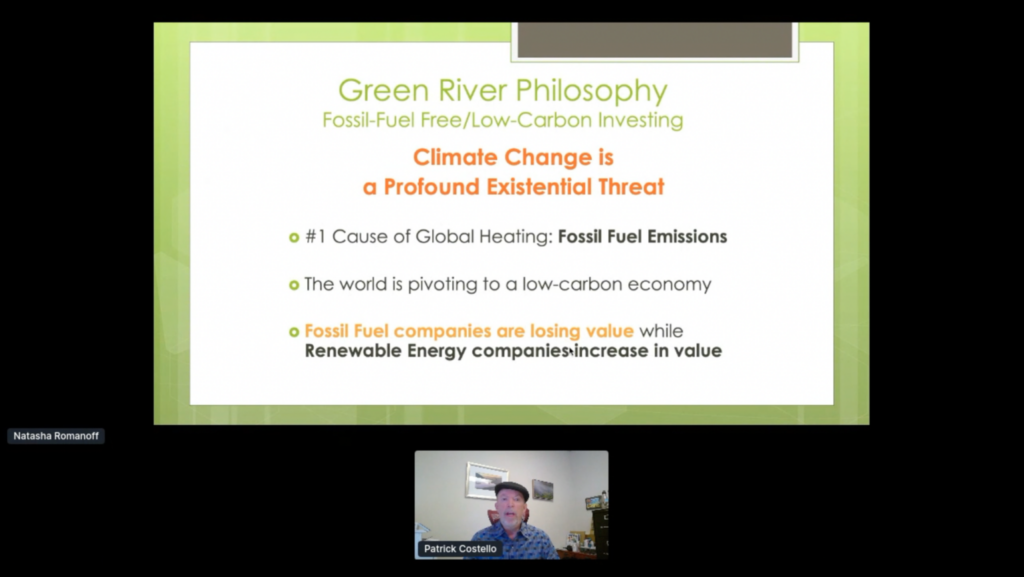It seems like everywhere we turn, we hear about how our beloved planet Earth is falling apart. Global warming, threatened wildlife, polluted oceans, natural disasters, deforestation and fresh water depletion barely scratch the surface of the environmental issues we’re facing as a society.
If you’ve ever thought “what can I do, in my little part of the world, to make things better?” applying an environmentally responsible lens to your your choices about how you spend your money can be a good place to stars.
As part of a broader discussion about sustainable living with leading eco thought leaders: we talked to Patrick Costello from Green River Financial Services about how we can ensure we’re investing in companies with “green” missions.
Going Green with Your Wallet
Patrick Costello is a Marin-based financial advisor who works with clients to help them align their investment strategies with their personal ethics and values. He says “there is no Planet B. Humanity has been in a sweet spot with our planet for thousands of years climate-wise, but we need to move to mitigation and adaptation.”
Translation: as a society, we are moving away from fossil fuels to renewable clean energy. The current presidential administration has already issued a goal to reduce greenhouse gas emissions by more than half by the year 2030.
Most people underestimate how their investments can positively impact the climate. One study found that even a 500,000 fund that is divested from investments in fossil fuel companies can have a greater impact on the climate than individual activities people can do, such as avoiding plane flights, buying food in sustainable packaging and using climate-friendly transportation.

Three ways to become a “green” investor:
- First, put most of your money into mutual funds managed by fund families instead of buying individual stocks. The average fund contains between 25 to 100 stocks, so it’s spread out and less volatile.
- Use sites like FossilFreeFunds to look up existing funds to determine if that fund contains fossil free investments or not, as well as the fund’s performance.
- Don’t assume that an ESG branded fund is really a good one. Just because a fund is labeled as ESG credentiales (which stands for environment, social and governance) doesn’t mean it’s sustainably friendly. Some ESG funds are “greenwashed,” misleading investors to believe they are more sustainable than they actually are. Take a look at what the funds hold in terms of stocks and consult with your financial advisor.
Your dollars can make a difference, according to Costello. “If you invest with a fund managed by a fund family that is committed to sustainability, they can aggregate your interests as owners and approach big companies, like Starbucks, and get them to use packaging that doesn’t involve plastic or is reusable. That’s an additional benefit to investing in funds that are managed by sustainable fund families.”
Watch the full presentation below:
More from Better:
- Chicago’s Most Powerful Women 2021
- Breakwaters Bring New Life to Winnetka’s Lloyd Beach, Just in Time for Summer
- 10 Ways to Get Healthy, Be Mindful and Feel Younger in 2021
Donna Berry Glass is a freelance writer in Marin County who writes mostly about family and kid-oriented topics. When she’s not writing, she enjoys spending time with her family exploring the natural beauty of Marin, snuggling with her Cavalier King Charles spaniel while reading a good book or whipping up something delicious in her space-challenged kitchen. Donna is a supporter of the California Academy of Sciences, a world class science museum and research institution, and the Institute on Aging which provides much needed services to seniors and disabled individuals.


